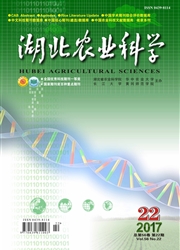

 中文摘要:
中文摘要:
微生物引起的社区二 mesophilic 组织厌氧的 chemostats,用葡萄糖喂的,其它与是的淀粉,唯一的碳采购原料,在二年期间以各种各样的冲淡率(为葡萄糖的 0.050.25 d 1 和为淀粉的 0.0250.1 d 1) 被学习连续操作。在喂葡萄糖的 chemostat, aceticlastic methanogen Methanosaeta spp。并且 hydrogenotrophic methanogen Methanoculleus spp。以低冲淡率支配了,而 Methanosaeta spp。并且 hydrogenotrophic Methanobacterium spp。当冲淡率比 0.1 d 1 大时,一起支配了。细菌与分别地以 0.05, 0.1,和 0.15 d 1, 的冲淡率支配的数 Bacteroidetes,螺旋菌,和 Actinobacteria 结盟了,当在更高的冲淡支配的 Firmicutes 评价时(0.2 和 0.25 d 1) 。在喂淀粉的 chemostat, aceticlastic 和 hydrogenotrophic methanogens 根本共存了冲淡率。尽管属于仅仅二个数的细菌为淀粉降级(以以另外的冲淡率的 0.08 d 1 和 Firmicutes 的冲淡率的螺旋菌) 主要负责,不同的细菌的类以不同冲淡率被识别。与在喂葡萄糖的 chemostat 的 Archaea 的例外,乐队模式由使中毒表明在二 chemostats 的微生物引起的社区的坡度胶化电气泳动(DGGE ) 以经常的冲淡率在长期的操作期间显示了显著变化。细菌的社区处于冲淡率随着变化变化了,并且在在喂葡萄糖、喂淀粉的 chemostats 的长期的操作期间是乖僻的。
 英文摘要:
英文摘要:
The microbial community structures of two mesophilic anaerobic chemostats, one fed with glucose, the other with starch as sole carbon sources, were studied at various dilution rates (0.05-0.25 d-1 for glucose and 0.025-0.1 d-1 for starch) during two years continuous operation. In the glucose-fed chemostat, the aceticlastic methanogen Methanosaeta spp. and hydrogenotrophic methanogen Methanoculleus spp. predominated at low dilution rates, whereas Methanosaeta spp. and the hydrogenotrophic Methanobacterium spp. predominated together when dilution rates were greater than 0.1 d 1. Bacteria affiliated with the phyla Bacteroidetes, Spiro- chaetes, and Actinobacteria predominated at dilution rates of 0.05, 0.1, and 0.15 d-l, respectively, while Firmicutes predominated at higher dilution rates (0.2 and 0.25 d-l). In the starch-fed chemostat, the aceticlastic and hydrogeno- trophic methanogens coexisted at all dilution rates. Although bacteria belonging to only two phyla were mainly responsible for starch degradation (Spirochaetes at the dilution rate of 0.08 d-1 and Firmicutes at other dilution rates), different bacterial genera were identified at different dilution rates. With the exception of Archaea in the glucose-fed chemostat, the band patterns revealed by denaturing gradient gel electrophoresis (DGGE) of the microbial communities in the two chemostats displayed marked changes during long-term operation at a constant dilution rate. The bacterial community changed with changes in the dilution rate, and was erratic during long- term operation in both glucose-fed and starch-fed chemo- stats.
 同期刊论文项目
同期刊论文项目
 同项目期刊论文
同项目期刊论文
 Removal of High-Concentration Acid Red 73 in Aqueous Solution by Using the Prepared Fe/Cu Bimetallic
Removal of High-Concentration Acid Red 73 in Aqueous Solution by Using the Prepared Fe/Cu Bimetallic 期刊信息
期刊信息
